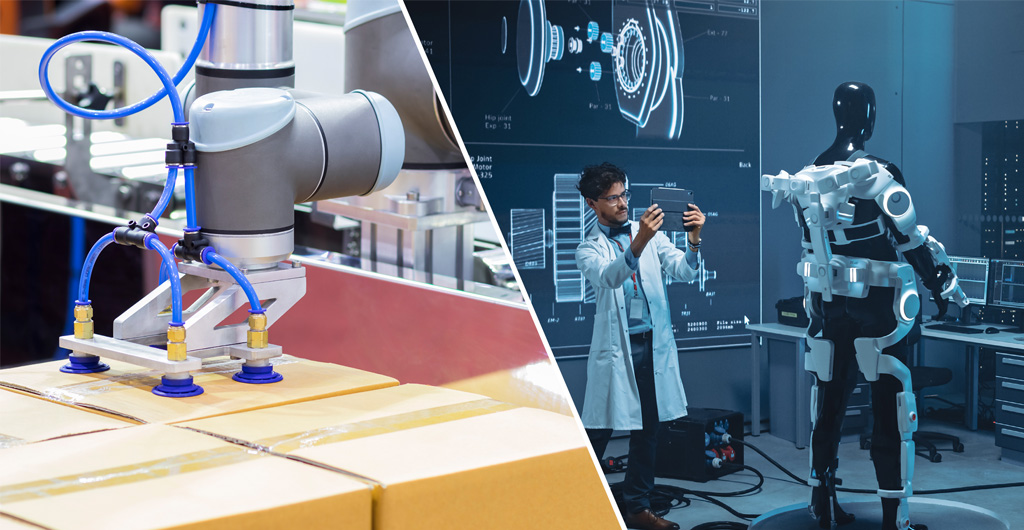Inclusive design helps do the heavy lifting

To achieve this vision in your business, you have to consider ways to overcome barriers that are dependent on your employee’s physical abilities—enabling a more inclusive workforce. This is where Diverse & Inclusive (D&I) Design comes into play.
The primary cause of workplace injuries is overexertion.[1] These injuries incur medical costs, worker compensation benefits, and result in decreased productivity. Ensuring individuals are accommodated to carry out their tasks reduces risk of injury to themselves and their coworkers while promoting diversity and inclusion.
So, how can we be inclusive of all abilities when it comes to something like lifting weight limits? Let’s take a look.
According to manual handling regulations in Canada, the maximum acceptable lifting weight is 23 kg. However, this number does not reflect the abilities of the workforce as a whole. Among the main factors affecting lifting weight are gender, lifting height, and lifting frequency. Thus, when specifying the optimum lifting weight, these factors must be considered.
With these considerations in mind, the table[2] below offers guidance on optimal weights. For every project design phase, the relevant data from this table can be used to develop the design criteria with current and future workforce in mind.
Maximum acceptable weights (kg) for males and females performing lifting, lowering, and carrying tasks
| One lift every | |||||||||||||||||
| 5 sec | 9 sec | 14 sec | 1 min | 2 min | 5 min | 30 min | 8 h | ||||||||||
| X̅ | s | X̅ | s | X̅ | s | X̅ | s | X̅ | s | X̅ | s | X̅ | s | X̅ | s | ||
| Low lift | M | 22 | 4.4 | 27 | 7.9 | 31 | 6.8 | 41 | 11.3 | 47 | 12.9 | 51 | 12.6 | 52 | 13.8 | 61 | 16.3 |
| F | 10 | 2.3 | 12 | 1.8 | 13 | 1.9 | 15 | 3 | 17 | 2.1 | 17 | 1.8 | 19 | 2.6 | 25 | 4.2 | |
| Low lower | M | 25 | 8.2 | 32 | 8.2 | 35 | 9.3 | 43 | 11.6 | 49 | 15.1 | 53 | 16.4 | 55 | 18.3 | 70 | 14 |
| F | 10 | 2.2 | 13 | 3.3 | 14 | 2.3 | 16 | 3.2 | 18 | 3.4 | 19 | 4.7 | 20 | 3 | 27 | 7.3 | |
| Centre Lift | M | 18 | 4.4 | 24 | 5.9 | 28 | 5.2 | 34 | 7.4 | 35 | 8.1 | 37 | 7 | 41 | 7.2 | 44 | 8.1 |
| F | 10 | 2.1 | 11 | 1.5 | 12 | 1.7 | 12 | 1.5 | 15 | 1.6 | 14 | 1.4 | 16 | 2.7 | 18 | 3.1 | |
| Centre lower | M | 25 | 7.7 | 28 | 5.4 | 33 | 7.1 | 36 | 8 | 42 | 10.9 | 37 | 6.7 | 42 | 9 | 52 | 10.5 |
| F | 11 | 2.3 | 12 | 1.8 | 12 | 1.8 | 13 | 3.4 | 15 | 2.2 | 17 | 3.2 | 17 | 3.9 | 17 | 4.7 | |
| 10 sec | 16 sec | ||||||||||||||||
| Carry | M | 27 | 9.7 | 34 | 8.6 | 44 | 12.1 | 45 | 11.5 | 50 | 14.4 | 56 | 17.1 | 66 | 15.2 | ||
| F | 14 | 2.7 | 15 | 2.2 | 20 | 4.7 | 19 | 3.6 | 20 | 4.8 | 20 | 4.3 | 27 | 4.7 | |||
X̅ = mean
s = standard deviation
M = male
F = female
Innovation in engineering design propels D&I in lifting even further. Let’s examine four application examples:
- Floor slipperiness[3] is an environmental factor that affects the maximal acceptable weight of handling and can be adjusted to improve ease of lifting. It can be quantified using the coefficient of friction of both static and dynamic friction. Implementing high friction floors in frequent lifting spaces would aid in lifting by affecting both the physiological and perceptual responses of the workers.
- An innovative solution to reduce lifting in a production line is the Tool Suspension System, a workstation design that is currently being used by Porsche. Such a system would remove the need to carry tools around, reducing the risk of overexertion.
- Lifting endurance is a major factor where the construction industry faces a shortage of personnel in the labor market. Some innovation in this area could attract more individuals into the construction workforce by increasing their lifting endurance. Recently, simplified exoskeletons are being developed that bricklayers can strap onto. When worn, these exoskeletons reduce the strain on the worker with various passive and active lifting mechanisms. This kind of automation would reduce cases of injury and level the playing field for the workforce in masonry, particularly for women and older bricklayers.
- Finally, to really take accessibility to the next level, robots that are remotely controllable can be used. Such robots would completely automate lifting, with some having built in cameras that could be used to navigate the site. Such technologies would make lifting accessible for individuals with varying physical abilities across various industries.
Making considerations in design that go beyond accessibility helps create an inclusive environment, improving employee morale and productivity. From a business standpoint, reducing these physical risks result in long-term benefits, from improved safety to lower staff turnover rates.
The applications above are only a few examples of how D&I Design can influence your ability to attract a diverse workforce. By executing small changes, you can improve operations through sensitivity in design and meet your vision of a more diverse and inclusive workplace.
See more on D&I Design in this blog by Laura Twigge-Molecey, managing director for Hatch’s Project Delivery Group and D&I Design program sponsor.
Tell us about your vision for improved diversity in your workforce through D&I Design–we can help!
Sources
[1] Luis A. Saavedra-Robinson, Leonardo A Quintana J, Luis Díaz Fortunato Leal, and María Niño, “Analysis of the lifted weight including height and frequency factors for workers in Colombia”, 2012, LINK
[2] Vincent M. Ciriello and Stover H. Snook, “A Study of Size, Distance, Height, and Frequency Effects on Manual Handling Tasks”, 1983, HUMAN FACTORS, 25(5): 473-483
[3] Kai Way Li, Rui-feng Yu, and Xiao L. Han, “Physiological and psychophysical responses in handling maximum acceptable weights under different footwear–floor friction conditions”, 2007, LINK

Lucig Aroyan
Co-op student , Controls and Automation
Lucig is a chemical engineering student at the University of Waterloo, Canada. During her co-op work term with Hatch, Lucig has become involved with our D&I Design team, investigating ways to incorporate aspects of diversity into our design processes. This gives Lucig an avenue for honoring her interest in diversity and inclusion by combining this passion with her engineering training in the pursuit of better ideas that will encourage more inclusive workplaces for all.